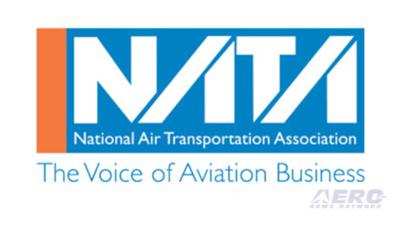Thu, Apr 30, 2020
The Standardized Curricula Are Voluntary
NBAA and NATA welcome the release of FAA guidance on a new standardized curriculum for Part 135 training that will improve safety and increase administrative efficiencies for on-demand operators.

The advisory circular streamlines the relationship between Part 142 training centers and on-demand air carriers, and reduces inefficiencies in the approvals and qualification processes. The guidance also creates a Training Standardization Working Group composed of industry and FAA experts that will develop standardized training procedures for the most common aircraft types.
The guidance was developed by the FAA after NBAA, NATA, Part 135 operators and training centers recommended the concept through the Air Carrier Training Aviation Rulemaking Committee.
"NBAA is committed to continually improving the safety of our industry, and by working jointly with operators, training centers and NATA, we are proud to have developed a concept of standardized curriculum that will revolutionize training for Part 135 operators," said NBAA President and CEO Ed Bolen. "We applaud the FAA's effort during these difficult times to deliver guidance that significantly heightens safety standards and creates a dynamic, responsive and more efficient pilot training program."

"NATA is pleased about this exciting advancement in Part 135 training that provides efficiency and safety gains for both operators and the FAA alike," said NATA President and CEO Timothy Obitts. "This is the result of a tremendous four-year effort from many industry stakeholders, and we are pleased that the FAA is implementing the recommendations of the FAA's Air Carrier Training Aviation Rulemaking Committee. We'd also like to thank NATA's Vice President of Regulatory Affairs John McGraw for his leadership as Chair of the ACT ARC Working Group, and NBAA's Brian Koester and Mark Larsen, along with our members who served on the ARC and provided their expertise and time to this effort."
The standardized curricula are voluntary and Part 135 operators can continue with their current training programs. However, the FAA anticipates most Part 135 operators will choose to use standardized curricula and training centers that promote safety, enable continuous improvement through data analysis data and increase administrative efficiency. The concept also supports the National Transportation Safety Board's initiative to increase safety in Part 135 operations.
More News
A Puff Of Smoke Came Out From The Top Of The Engine Cowling Followed By A Total Loss Of Engine Power On May 9, 2025, about 1020 mountain daylight time, an experimental amateur-buil>[...]
From 2022 (YouTube Edition): Jenny, I’ve Got Your Number... Among the magnificent antique aircraft on display at EAA’s AirVenture 2022 was a 1918 Curtiss Jenny painstak>[...]
Very High Frequency (VHF) The frequency band between 30 and 300 MHz. Portions of this band, 108 to 118 MHz, are used for certain NAVAIDs; 118 to 136 MHz are used for civil air/grou>[...]
“From approximately November 2021 through January 2022, Britton-Harr, acting on behalf of AeroVanti, entered into lease-purchase agreements for five Piaggio-manufactured airc>[...]
Microburst A small downburst with outbursts of damaging winds extending 2.5 miles or less. In spite of its small horizontal scale, an intense microburst could induce wind speeds as>[...]
 NTSB Prelim: Lee Aviation LLC JA30 SuperStol
NTSB Prelim: Lee Aviation LLC JA30 SuperStol Classic Aero-TV: Curtiss Jenny Build Wows AirVenture Crowds
Classic Aero-TV: Curtiss Jenny Build Wows AirVenture Crowds ANN's Daily Aero-Term (05.30.25): Very High Frequency (VHF)
ANN's Daily Aero-Term (05.30.25): Very High Frequency (VHF) Aero-News: Quote of the Day (05.30.25)
Aero-News: Quote of the Day (05.30.25) ANN's Daily Aero-Term (05.31.25): Microburst
ANN's Daily Aero-Term (05.31.25): Microburst




